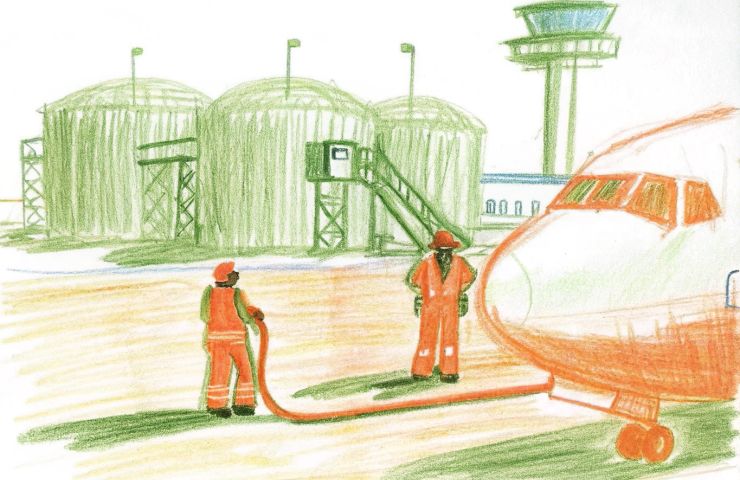
Hydrogen Production Takes Flight at Hamburg Airport with New Infrastructure Roadmap
October 24, 2025Ever wondered what airports will look like when planes run on hydrogen? Well, at Hamburg Airport, that vision is almost reality—and it’s a big leap toward sustainable energy in aviation. On 14 October 2025, the airport unveiled a detailed hydrogen infrastructure roadmap, crafted with help from the German Aerospace Center (DLR), Airbus, and Lufthansa Technik. Backed by Hamburg’s Ministry of Economic Affairs and Innovation, this guide covers storage, refueling, and maintenance for hydrogen-powered operations, raising the bar for medium-sized hubs everywhere.
Blueprint for Aviation’s Hydrogen Future
The roadmap lays out the nuts and bolts—technical specs, operational tweaks, you name it—so airports can swap out old power systems. It tackles everything from cryogenic liquid hydrogen tanks to high-pressure gas stations for ground vehicles. Through the EU-funded BSR HyAirport project, Hamburg Airport is using its facilities as a live demo, testing scalable setups and sharing what works across Europe. And with Airbus eyeing hydrogen-powered medium-haul jets by 2035, nailing these standards now is key.
Inside the Hydrogen Aviation Lab
Right at the heart of things is the Hydrogen Aviation Lab, run by Lufthansa Technik. They’ve turned an old Airbus A320 into a playground for fuel cell technology and hydrogen-handling tests. Think liquid hydrogen tanks, fuel cell modules, and next-gen safety controls—all set up to mimic real-world refueling and emergency drills. Engineers can tinker with rigs, keep an eye on system health, and tweak procedures long before the real deal hits passenger service.
Liquid Hydrogen Logistics
Of course, moving liquid hydrogen around at scale isn’t a walk in the park—it means building fresh supply chains. Green hydrogen (produced by electrolysis powered by renewables) rolls in via cryogenic trucks or sometimes by pipeline. Once on-site, custom cryotanks chill it down to −253°C. From there, special pumps either top off aircraft or convert it into high-pressure gas for vehicles on the tarmac. Safety’s top priority, so they fit double-walled pipes and automated leak detectors to keep everything in check.
Strategic Partnerships
But it’s not just about hardware. Airbus recently tapped Hamburg Airport as its first German member of the global Hydrogen at Airports network, sparking chats between airports, OEMs, and regulators. Meanwhile, the German Aerospace Center (DLR) is feeding in crucial research on hydrogen safety and performance, and all the players are teaming up on standards and certifications.
Funding and Policy Backing
Money and policy are the backbone of this whole thing. Hamburg’s Ministry of Economic Affairs and Innovation is chipping in to build the lab and flesh out the roadmap. It’s a clear sign of Germany’s commitment to the EU’s climate goals and the airport’s own Net Zero 2035 pledge. New EU rules on hydrogen safety and aviation emissions are also in the works, making sure the rulebook keeps pace with the tech.
Commercial and Regional Impact
For Hamburg, embracing hydrogen infrastructure isn’t just about bragging rights—it’s an economic shot in the arm. Local energy companies and logistics firms are gearing up to handle hydrogen supply chains, creating jobs and building know-how. Plus, this blueprint can be picked up by other medium-sized airports, boosting Germany’s lead in green hydrogen production. Airlines get a ready-made playbook for refueling, slashing reliance on fossil jet fuel and shrinking carbon footprints.
Navigating Regulatory Hurdles
Rolling out hydrogen at scale means wrestling with a patchwork of safety rules. Right now, there’s no one-size-fits-all European standard for airport hydrogen ops. That’s why collaboration between the European Union Aviation Safety Agency (EASA), Germany’s Federal Aviation Office (LBA), and local authorities is crucial. Hamburg Airport’s roadmap is already piloting steps aligned with draft EASA guidelines, helping shape the rules of the road.
The Road Ahead
Looking forward, the roadmap sets some bold targets. Airbus plans its first hydrogen-powered medium-haul planes by 2035, which means airports need their ground systems ready by the early 2030s. Down the line—though it’s still early days—hydrogen could fuel up to 60% of flights out of Hamburg by 2050, translating to around 60,000 tonnes of H₂ a year. These figures are best-case scenarios, not promises, but they give a taste of the scale we’re talking about.
As the aviation world rolls up its sleeves, Hamburg Airport stands out as a live testbed for hydrogen production and refueling. It’s a real-world example of how airports can spearhead industrial decarbonization, blending research, regulation, and hands-on experiments. I, for one, can’t wait to see if, in the next decade, we’ll be boarding flights under a hydrogen banner—right from Hamburg.



 With over 15 years of reporting hydrogen news, we are your premier source for the latest updates and insights in hydrogen and renewable energy.
With over 15 years of reporting hydrogen news, we are your premier source for the latest updates and insights in hydrogen and renewable energy.